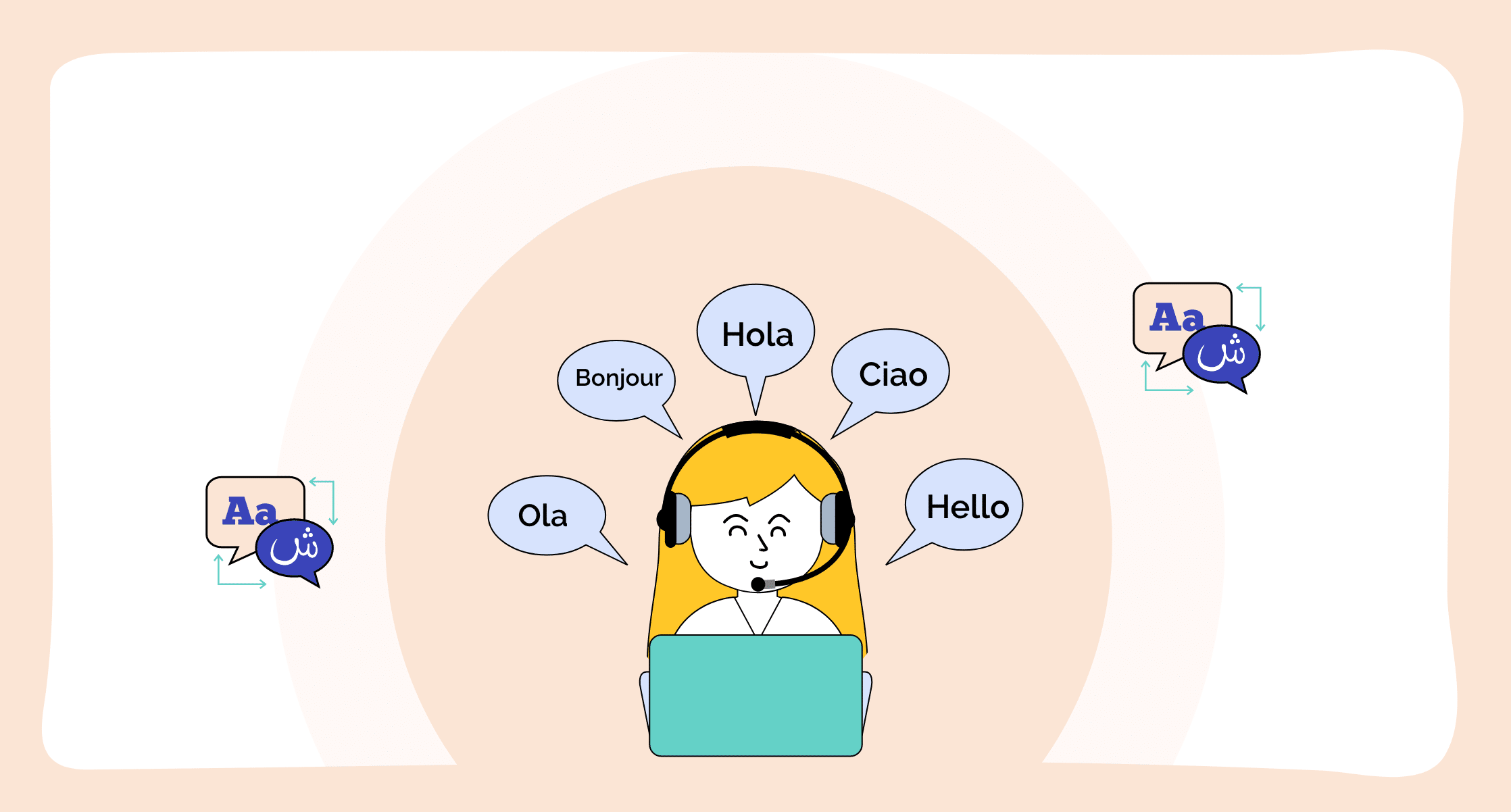Home » AI-Powered vs. Human » Is Google Translate Enough for your Multilingual Customer Service?
Is Google Translate Enough for your Multilingual Customer Service?
- | Aiswarya Menon

Table of Contents
“It won’t leak in your pocket and make you pregnant.”
This slogan was meant to sell pens. Wait, what??!!
Yes, it was a slogan (a translation blunder, to be precise) from a renowned brand Parker Pen. Basically, Parker Pen was expanding its business to a Spanish-speaking audience in Mexico. Their original slogan context was “It won’t leak in your pocket and embarrass you”.
To translate “embarrass”, they used the Spanish word “embaraza”. Now, embarrass, and embaraza do look similar, but their literal meanings are radically different. In Spanish embaraza means “impregnate”.
Parker Pen is not the only one on this line. There is a list of other such translation blunders in advertising history.
You and I might laugh at these stories now, but such translation blunders can create a serious dent in a brand’s reputation. This is precisely why brands should pay laser-focus attention while translating their content into another language.
Should You Rely on Google Translate for Your Multilingual Customer Support?
To cater to a linguistically diversified audience today, having a superfine multilingual customer support system is non-negotiable. Multilingual customer service includes a multilingual company website and helps with desk content, localized social media handles and ad campaigns, etc.
“Building a multilingual customer support system is too much work. Let’s translate everything on Google Translate and get it over with!”
Google Translate has been getting more advanced day by day. But is it enough for your business localization needs? I highly doubt it.
Though automated machine translation can make your translation work faster, speed doesn’t always guarantee quality work and might hamper your brand in the long run.
Let’s understand why relying on Google Translate is a bad idea for your multilingual business.
4 Reasons Google Translate isn’t Enough for Your Multilingual Customer Service
More Content Errors, Less Credibility
Would you share your credit card details with a website you don’t trust? No, right?
Your business website is the door to impress your target audience and make sales. Content mistakes on your website can creep out your readers, aka the target audience. Poor content makes people doubt a brand’s credibility. Apparently, they won’t buy from a company they don’t find trustworthy.
Be it your website content, multilingual knowledge base, marketing collateral, or any content for that matter. If you care about building a solid reputation among your target group, content accuracy is something you can’t compromise on.
Google Translate Doesn’t Care About the Context
When KFC tried selling its “Finger Licking Good” food in China, the audience perceived it as a cannibalistic message because the translation read – “eat your fingers off”. In brief, the brand message got out of context and made another “Oops!” story in the translation history.
This is what happens when a company doesn’t give proper attention to details when localizing its business for a particular audience. The same can happen with Google-translated content as well.
The most significant setback of Google Translate is that it lacks contextual translation. The error vulnerability increases when you fully automate your translation with Google Translate. Hence, taking help from humans, native translators, and proofreaders becomes essential.
Compromised Brand Voice and Tonality
What sets a brand apart? It’s a unique brand voice, right? Also, a brand becomes a brand because it always stays relatable to its customers.
Even though you’re targeting another target group in the world, you would want to position your brand in its original identity, won’t you? Consistent content voice, terminologies, and brand tonality create an aesthetic for your brand. Customers immediately respond to such familiarity and stay connected forever.
But Google Translate can lead your content’s tonality and original message to an ordinary form. Your business can lose its unique charm, and your audience will lose interest in it altogether.
Erroneous Responses on Customer Support Tickets
Multilingual customer support doesn’t make sense without a multilingual customer ticketing system. Even though you’re short on multilingual support agents, you can still assist your customers with a localized customer chat support system.
Your customer would raise tickets. Your support agents can chat with them and resolve their queries in the customer’s preferred language with the help of Google Translate or other Machine Translation Tools (MTT). Though you can integrate Google Translate with your help desk tool, Google Translate’s inability to understand context and reference can lead to inaccurate translations. Such incorrect translations may backfire, and you may inadvertently lose customers for life.
What Should You Choose? Google Translate or Human Translators?
What should you choose between Google Translate or human translators? I believe the answer should be “none”.
Brands have to choose the ideal type of translation for different content formats. For example, websites, knowledge bases, marketing collateral, etc., should ideally be translated with human translations.
But when it comes to customer support, especially chat, and messaging, you can lean on AI-powered translations for quicker customer resolutions. Yet not by Google Translate but by a smart Machine Translation system like Lingpad’s superior Machine Translation Tool (more on this later).
The customer service agents can share relevant help center articles (localized with the help of human translations to maintain brand tone and contextual accuracy) with the customer. However, for low-priority content like a message that says – “Hi, my name is Sheldon, and I will be addressing your query today.” – you can use AI (since the stakes aren’t as high).
Machine translation can no doubt make your translation process faster. The only question is how to bring translation accuracy to your localization operations.
The answer to this lies in leveraging the benefits of both machine and human translation simultaneously.
How to Leverage Both Human and AI-powered Translation with Lingpad
- On Lingpad, you can order from both human/machine translations for file-based projects and knowledge-base integration.
- Lingpad's built-in AI translation tool is better than Google Translate. Lingpad's machine translation tool is capable of understanding the context and providing human-like translations.
- Customer Support agents can choose between Human and AI-powered translations to respond to multilingual support tickets.
- For file-based projects and knowledge base integrations, you can: Translate in smaller segments → Collaborate → Proofread → QA check → Approve!
I wish I could list out all the exciting features of Lingpad in a small list. But they’re too many. Why don’t you see yourself?

Amit Shivani
Amit Shivani is the Director of Sales at Lingpad. His superpower is bridging the gap between client needs and wants along with the sheer determination to redefine sales. Working with various brands to tackle their localization demands brings out his out-of-box, innovative persona. When he is not helping clients achieve expertise-status in their localization journey, he explores cities and street food and works towards gaining expertise-status for himself in photography.
Share this blog:
